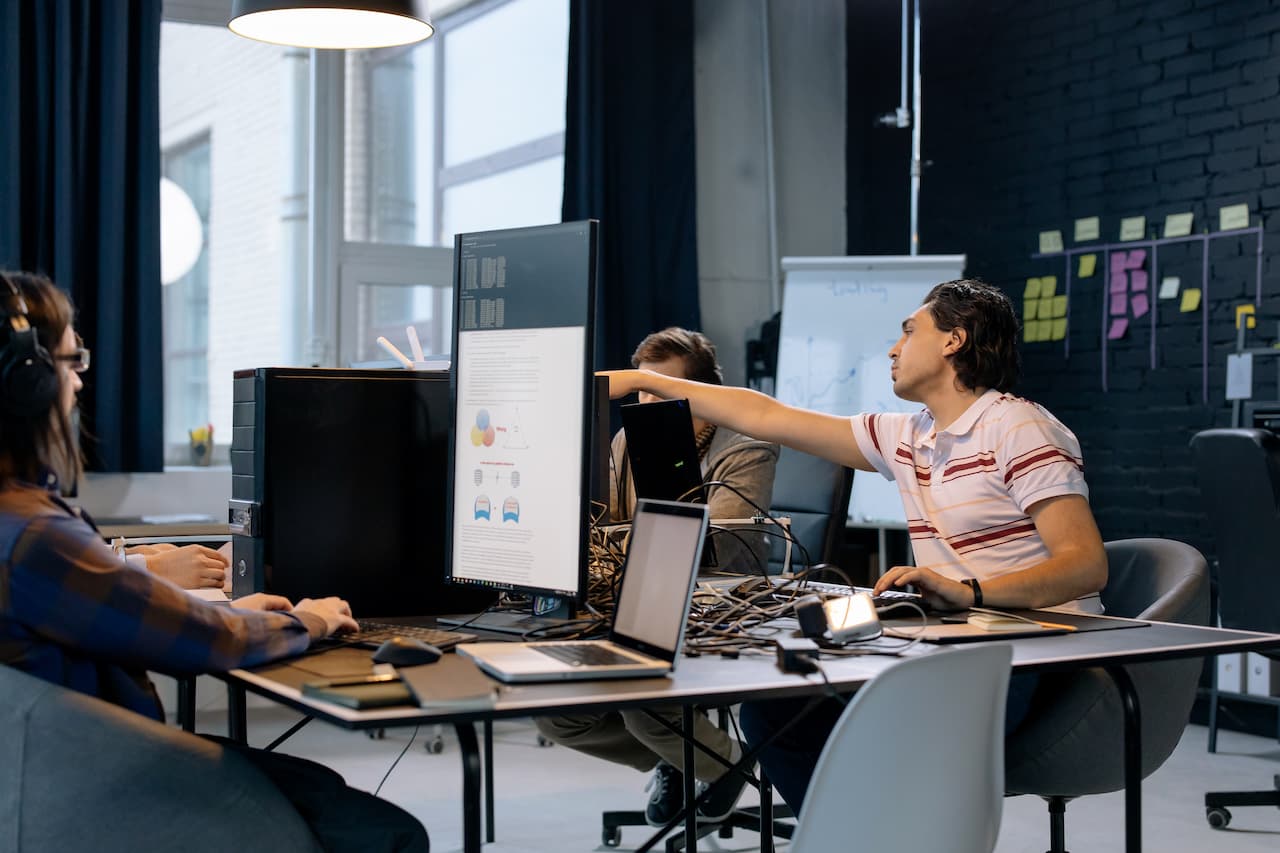
Mobile App Development Team: Structure, Roles and Hiring Models
Successful mobile app development is determined by more than just a great idea; the composition of the development team is also a critical factor. Assembling the right team structure with the right roles is essential for transforming a business concept into a powerful and useful mobile app. Factors such as the app’s scope, complexity, budget, and deadlines must be taken into consideration when deciding on a team structure and selecting members. Understanding the mobile app development team structure and roles can help to ensure success on this journey.
Crafting the Perfect Mobile App Development Team
Before investing in your app development project, it is beneficial to understand the scope, complexity, budget, and timeline associated with the type of app you plan to create. Once you have a clear understanding of this, you can determine the team of professionals needed to transform your business concept into a fully-fledged app.
For instance, if you are constructing a straightforward mobile app that will run on both Android and iOS, your development team should consist of the following:
- a project or product manager,
- an iOS developer,
- an Android developer,
- a backend developer,
- a QA engineer, and
- a UI/UX designer.

Main Responsibilities of Product and Project Managers
Product Manager:
1. Develop product strategy and roadmaps to meet customer needs and market opportunities.
2. Coordinate and manage product development, launch, and marketing activities.
3. Conduct competitive research, analyze market trends, and evaluate customer feedback.
4. Collaborate with cross-functional teams to ensure successful product delivery.
5. Develop product positioning, pricing, and promotional strategies.
6. Monitor product performance and develop improvement plans.
7. Manage product-related budgets and resources.
Project Manager:
1. Define project scope, goals, and deliverables that support business goals in collaboration with senior management and stakeholders.
2. Develop full-scale project plans and associated communications documents.
3. Effectively communicate project expectations to team members and stakeholders in a timely and clear fashion.
4. Plan and schedule project timelines and milestones using appropriate tools.
5. Track project milestones and deliverables.
6. Develop and deliver progress reports, proposals, requirements documentation, and presentations.
7. Determine the frequency and content of status reports from the project team, analyze results, and troubleshoot problem areas.
In order to ensure a successful project, it is beneficial to have both a product manager and a project manager. If a project is relatively simple, one professional can take on both roles. However, when dealing with more complex projects with a large scope, it is recommended to hire separate individuals for each role. This way, each manager can focus on the responsibilities that are specific to their job, helping to deliver the product in a timely and cost-effective manner.
Main Responsibilities of UI/UX Designers
1. Develop user interface designs for applications.
2. Create wireframes, prototypes, storyboards, user flows, process flows to communicate interaction and design ideas.
3. Work with developers to ensure design specifications are implemented.
4. Analyze user feedback and activity, and iterate to enhance the user experience.
5. Design graphical user interface elements, like menus, tabs and widgets.
6. Develop UI mockups and prototypes that clearly illustrate how the app functions and looks like.
7. Stay up-to-date on design trends and technology.
Main Responsibilities of iOS and Android developers
1. Turn mockups, wireframes, and sketches into high-quality code for the iOS/Android platform.
2. Collaborate with cross-functional teams to define, design, and ship new features.
3. Ensure the performance, quality, and responsiveness of applications.
4. Work on bug fixing and improving application performance.
5. Continuously discover, evaluate, and implement new technologies to maximize development efficiency.
It is ideal to have separate app developers for each mobile operating platform since iOS and Android require different approaches and programming languages. Mobile developers must be knowledgeable in the specific language and technologies for each platform in order to create the best user experience for the end user. They must also be aware of the differences between the two platforms and be able to develop apps that are optimized for each.
Main Responsibilities of Backend Developers
1. Ensuring the safekeeping, accessibility, and transfer of data to the appropriate user
2. Developing and integrating Application Programming Interfaces (APIs) across multiple platforms
3. Establishing the necessary coding frameworks and the overall framework of the application
4. Working with database management systems, Integrated Development Environments (IDEs), and teamwork platforms
5. Implementing payment gateways to facilitate in-app purchases.
Main Responsibilities of QA Engineers
1. Ensuring that all company quality standards are adhered to.
2. Carrying out manual testing of applications and executing scripts for automated testing purposes.
3. Monitoring the progress of tests and recording test cases.
4. Documenting bugs.
5. Establishing rigorous testing protocols to assess the quality of the apps and decide when they are ready for release.
Determining the Right App Development Team Structure
When determining the structure of your development team for your mobile app, you should consider the following factors: the mobile platforms you’re aiming to reach, the complexity and number of features of the app, the expertise of your development team, the deadlines of the app development project, and the available budget. Once you have taken these into account, you can decide on the final composition of your team.
When analyzing app complexity, mobile applications can be divided into three categories: simple, medium, and complex.
Simple apps typically feature standard features, a straightforward design, and a minimal number of buttons.
Medium apps, meanwhile, boast more intricate capabilities, multiple screens and features, and a more intricate design.
Сomplex apps offer advanced features, interactive design, in-app payment systems, and sophisticated chatbots.
If you need a mobile app development team, the amount of time it will take to deliver a fully-fledged app depends on its complexity. A simple app can be ready in 2-4 months, while a medium app will take 6-10 months, and a complex app may require 8+ months.
To speed up the development process, you can add extra developers to your team. Alternatively, you can start with an app for one platform and reduce its functionality; this is a more budget-friendly approach that can help you launch faster.
Are you looking to build a successful mobile app? Orangesoft can help. We have the right specialists to turn your idea into a full-scale mobile app. Our team consists of experienced developers, project managers, QA engineers and other specialists, who are all ready to deliver high-quality mobile apps for various business domains. Reach out to us to discuss the team structure you need – we are committed to assisting you in finding the right people and resources to get the job done.